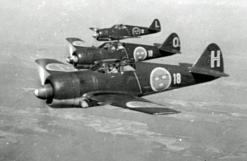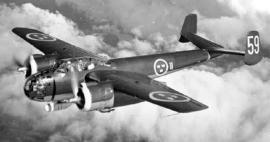

Copyright © Hans Högman 2020-05-02


The Early History of the Swedish
Air Force
The Swedish Air Force was established as an
independent armed service on 1 July 1926.
However, already in the 1910s, there were aviation
activities in the Army. The first army flight took
place on the ice outside Stockholm in 1912. The
Navy was also early with aviation and in February
1919 the Navy established a winter flying training
school in Hägernäs just north of Stockholm.
At this time air reconnaissance was the most
important mission for military aviation.
The Army Aviation was at first organized within the
Signal Troops. In 1913 the army aviation was
expanding and the flying activities were moved to
the military airbase Malmen outside the city of
Linköping. As mentioned above the initial flying
activities was air reconnaissance but now also
fighter aircraft and bombers were being used.
One of the things stipulated in the 1925 Defense
Act was the establishment of a new independent
armed service, The Swedish Air Force, effective as of
1 July 1926. However, the first Commander in chief
of the Air Force was appointed already on 1 July
1925.
The new Swedish Air Force was organized on four
Flying Corps; 1st Flying Corps in Västerås, 2nd
Flying Corps in Hägernäs north of Stockholm, 3rd
Flying Corps at Malmen in Linköping, and 4th Flying
Corps in Frösön, Jämtland. An Air Force Flying
School was established in Ljungbyhed, Skåne.
The mission of the four Flying Corps was initially air
reconnaissance and watching over the Swedish
borders and preventing violations.
At the end of the 1920s, the aircraft of the Air Force
were renewed and 18 new military aircraft were
acquired; Svenska Aero J 5 and J 6 Jaktfalken and 12
British J 7 Bristol Bulldog.
The Swedish Air Force is Expanding
The Defense Act of 1936 signified a large
armament of the Swedish Armed Forces. The
armament also included a stronger air force. The
four earlier Flying Corps was now reorganized into
Wings (UK) or Groups (US). Further, 3 new wings
were established. The Air Force now consisted of 4
bomber wings, one fighter wing, and two air
reconnaissance wings. The fighter wing was located
to the F8 Wing (Svea flygflottilj F8) at Barkaby
airbase north of Stockholm.
The armament of the air force also resulted in a
domestic Swedish aircraft industry when Saab
was founded in 1937 in Linköping. Saab stands for
Svenska Aeroplan AB (Swedish Aerospace Inc), a
Swedish aerospace and defense company. The first
Swedish military aircraft constructed by Saab was
the bomber Saab 17.
The image to the
right shows the
Swedish light
bomber Saab B17A.
Wikipedia.
Saab 17 was built in
two versions; bomber and air reconnaissance. The
first set of aircraft was delivered to the Air Force on
23 March 1942. In total 324 Saab 17 were being
built.
The Saab 18 was a twin-engine bomber and fighter
with a crew of three; pilot, navigator, and
bombardier. It was first used by the air force in June
1944.
The image to the left
shows the Swedish
bomber Saab B18A
circa 1946. Wikipedia.
The J 22 was a
Swedish fighter aircraft made by Flygförvaltningens
Flygverkstad in Stockholm and designed by flight
engineer Bo Lundberg. It was a fighter aircraft but it
also served as air reconnaissance aircraft. The first J
22 was delivered in October 1943 and went to the
F9 Wing (Göta flygflottilj F 9). The J 22 was very
maneuverable with a fast acceleration. With a well-
trained pilot, the performance of the J 22 was in
class with other nations fighter aircraft at the time.
The image to the right
shows the Swedish
fighter J 22 in the air
during the second world
war. Image Wikipedia.
The J 22 was constructed
with some special
demands of the building material of the aircraft.
There was a shortage of aluminum during the war
and the aluminum available was prioritized for the
Saab production of the bombers. The J 22 was
therefore constructed with a frame of steel covered
with die-casted plywood of birch, nothing unusual
for aircraft at the time.
The Swedish fleet of fighter aircraft was
strengthened during WWII, especially after the
Battle of Britain where the fighter aircraft had
decisive importance to the British victory. New
fighter wings were established and the air force
now consisted of 16 wings; six bomber wings, six
fighter wings, three air reconnaissance, and one air
torpedo wing. The number of aircraft increased
from 180 in 1939 to 600 in 1945. The large
expansion of the Swedish Air Force continued
during the first decades after the war.
Swedish Air Wings in the 1900s.
The Cold War was a period of a large and rapid
expansion of the Swedish Air Force. The
domestically produced aircraft of course favored
SAAB in Linköping. In the 1950s the first Swedish jet
aircraft such as the J 29 Tunnan, A 32 Lansen, and
J 35 Draken was delivered to the air force.
Uniforms of the Swedish Air
Force
When the Swedish military aviation after the first
world war received the status of an independent
permanent armed service in 1926 the question of
Swedish aviation uniform arose. The Swedish Air
Force adopted a uniform on the French model. This
was a uniform based on the traditional naval
officers’ uniform, however single-breasted.
•
Uniformes of the Swedish Air Force
Uniforms of the Swedish Armed
Forces
•
Uniforms of the Swedish Air Force
•
Swedish Military Aircraft
•
Uniforms of the Swedish Army
•
Uniforms of the Swedish Navy
•
Uniforms of the Swedish Amphibious Corps
•
Swedish Military Rank Insignias
Reference Literature
1.
Flygvapnets historia, överstelöjtnant Lennert
Berns
2.
Svenska flygvapnets förband och skolor under
1900-talet, Christian Braunstein, 2003
3.
Försvarets historiska telesamingar, Flyghistoria
från SFF, Flygvapnet
4.
Wikipedia
5.
Digitalmuseum
Is it OK to copy material (text or images) from
this page or from any other page on this
website and publish it on your own homepage?
The answer is NO! However, it is OK to have a
link to my pages.
Top of page
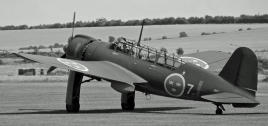
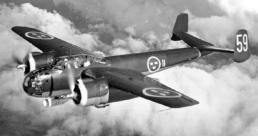
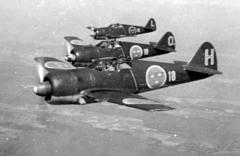
The History of the
Swedish Air Force







